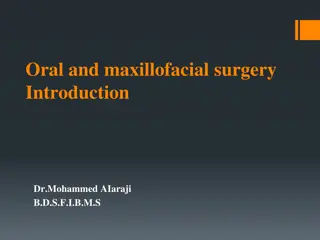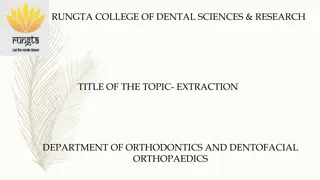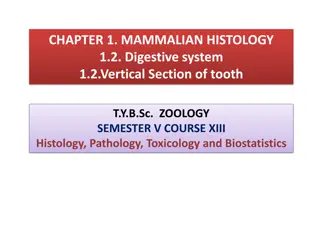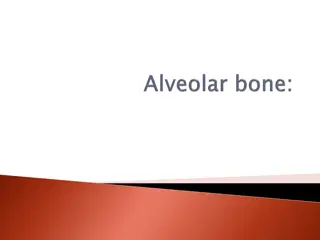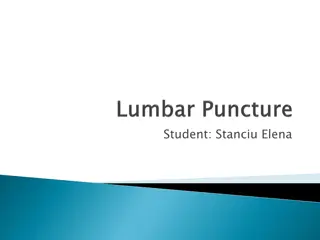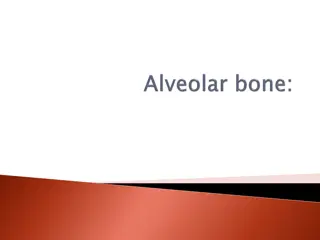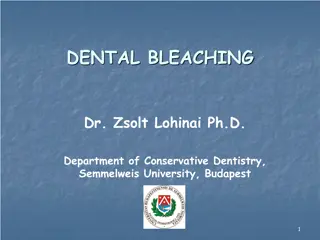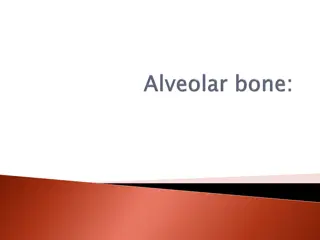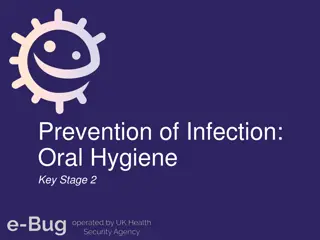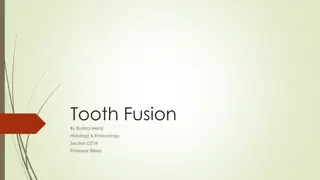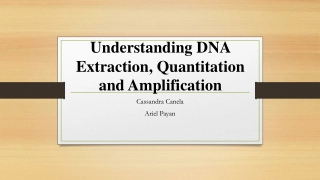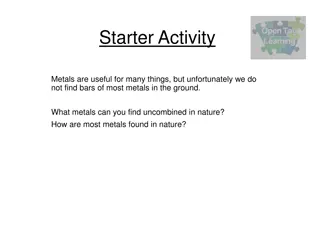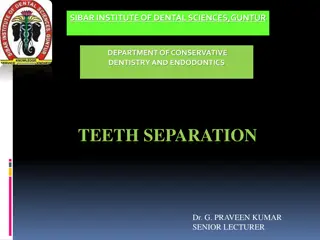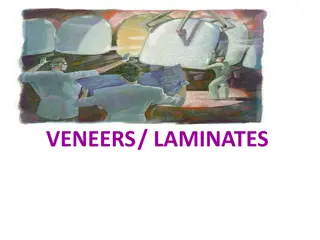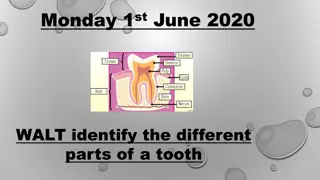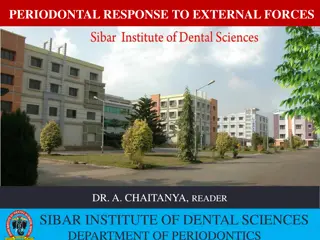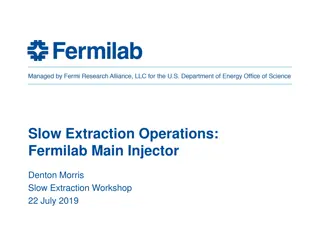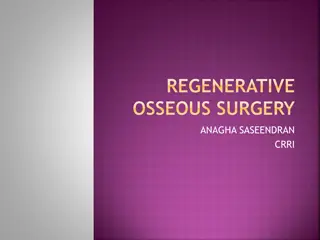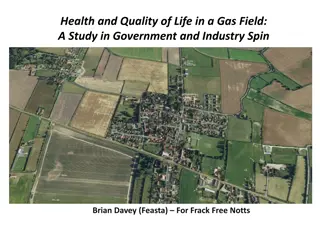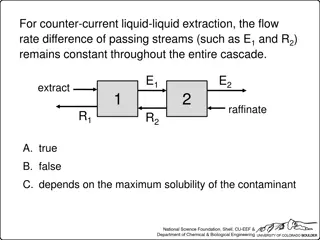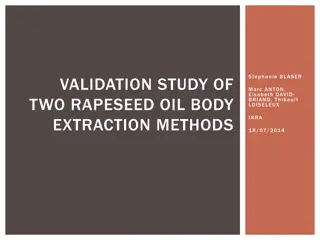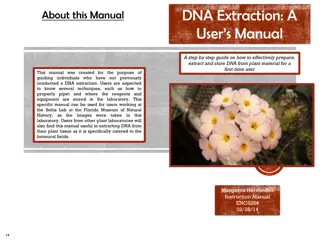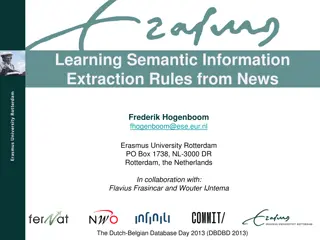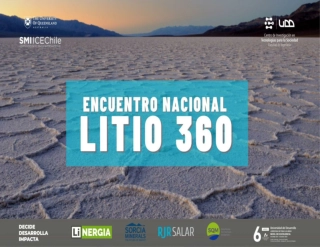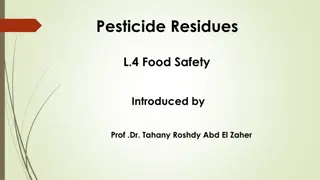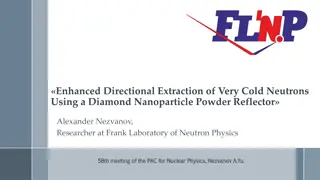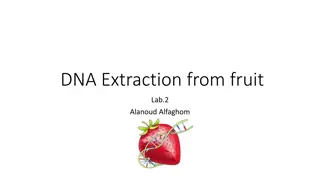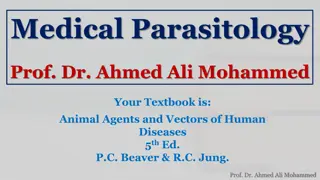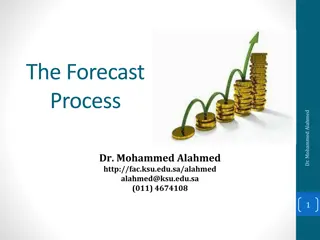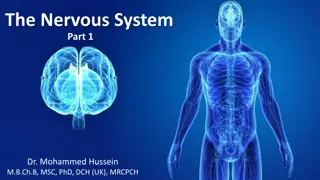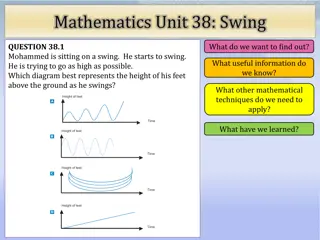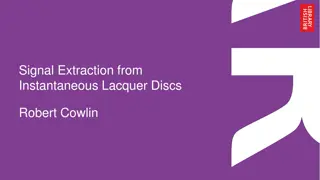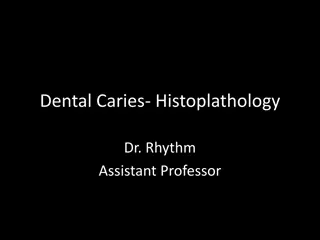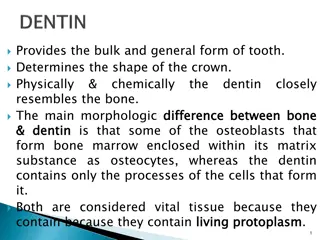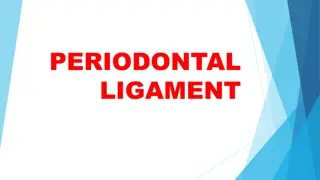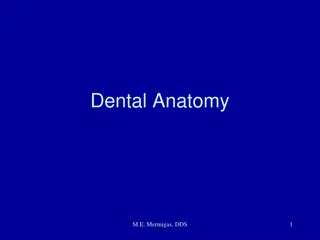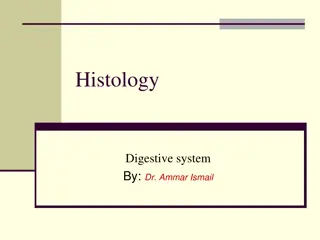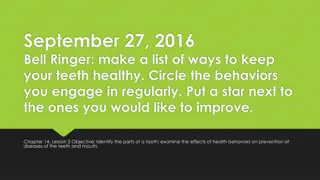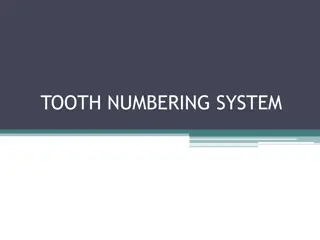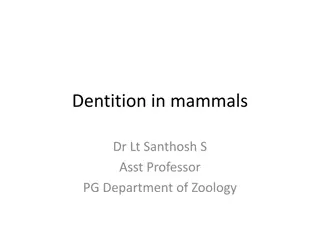Overview of Tooth Extraction and Contraindications: Dr. Mohammed Alaraji
Tooth extraction is a common procedure performed by dentists, with severe caries and periodontal disease being primary indications. Dr. Mohammed Alaraji discusses the importance of extraction methods and contraindications for the procedure in this informative presentation.
Download Presentation

Please find below an Image/Link to download the presentation.
The content on the website is provided AS IS for your information and personal use only. It may not be sold, licensed, or shared on other websites without obtaining consent from the author. Download presentation by click this link. If you encounter any issues during the download, it is possible that the publisher has removed the file from their server.
E N D
Presentation Transcript
Extraction of teeth & contraindications of extraction Dr .Mohammed Alaraji BDS,FIBMS
Extraction of teeth is the most important part of minor oral surgery and the most common procedure to general dental practitioner (dentist).
Definition Exodontia is a painless removal of teeth from their bony alveolar socket with relatively minimal amount of trauma to the investing or surrounding tissues, so that the wound may heal without postoperative problems.
methods of extraction 1) Intra-alveolar extraction (forceps extraction). 2) Trans-alveolar extraction (surgical extraction). In forceps extraction which is enough for extraction in most of cases consist of removing the tooth or root using forceps or elevators or both. trans-alveolar extraction we dissect the tooth or root form its bony attachment by raising a flap and removal of some of the bone surrounding the roots, which are then removed using elevators and/or forceps.
INDICATIONS OF TEETH EXTRACTION
1-Severe caries This is the most common reason to remove a tooth. Badly carious teeth that are beyond restoration should be removed. Badly carious teeth result in deterioration of the oral hygiene resulting in bad oral hygiene and bad smell in addition to that sharp edges of the carious teeth leads to repeated trauma and ulceration to the mucosa and the tongue, in addition to pain during eating and drinking. Untreated teeth with caries may end with pulpitis, periapical pathology etc...
2-Severe periodontal disease Severe and extensive periodontal disease is a common reason for tooth removal, in chronic periodontitis there is excessive bone loss and mobility in the tooth. As a rough guide, loss of about half of the normal alveolar bone or extension of pockets to the bifurcation of the roots of posterior teeth and hypermobility of the teeth means that extraction of the involved tooth is necessary.
3- Pulp pathology acute pulpitis or chronic pulpitis, non-treatable pulpal lesion. If endodontic therapy is not possible or if the tooth is not amenable for endodontic treatment, extraction is indicated.
4- Apical pathology Periapical lesions like periapical abscess, periapical granuloma, and cyst. If the teeth fail to respond to all conservative treatment to resolve apical pathology due to technical reasons or other causes such teeth are indicated for extraction.
5- Orthodontic reasons During orthodontic treatment, tooth or teeth may be extracted for: A. Therapeutic extraction. e.g., extraction of upper first premolar for treatment of Malposed upper canine and extraction of teeth to provide space for teeth alignment. B. Malposed teeth. teeth which erupted out of the line of arch are difficult to clean and not amenable for orthodontic treatment are indicated for extraction. C. Preventive extraction. means that during mixed dentition period (permanent and deciduous teeth), dental surgeon may extract a few deciduous teeth to prevent malocclusion and all these extractions should be done after proper evaluation by specialist orthodontic.
6-Prosthetic considerations Extraction of teeth are indicated for: 1) Providing efficient dental prosthesis. 2) To provide better design for success of partial denture, few teeth maybe extracted. 3) Solitary tooth or non-strategic tooth to enable the patient to have complete denture e.g., full mouth clearance.
7- Impacted teeth: Retention of unerupted teeth beyond the normal time of eruption may sometimes be responsible for: - 1. Vague facial pain. 2. Periodontal problems of the adjoining teeth. 3. Tempromandibular joint problems. 4. Bony pathology e.g., cyst (dentigerous cyst), tumor, pathological fracture. 5. May predispose to anterior teeth crowding 6. Significant infection (pericoronitis) e.g., partially erupted third molar.
8-Supernumerary teeth The teeth may be impacted or malposed and such teeth may predispose to malocclusion, periodontal disturbances, facial pain, bony pathology (cyst), aesthetic problems and preventing the eruption of adjacent teeth.
9- Tooth in the line of fracture of the jaws This tooth may be extracted if: 1) It is a source of infection at the site of the fracture. 2) The tooth itself is fractured. 3) Interfere with fracture reduction. 4) Interfere with healing of fracture.
10- Teeth in relation with pathological conditions: They are indicated for extraction if they are involved in: A. Cyst formation. B. Neoplasm (tumor). C. Osteomyelitis (Infection of bone). D. Pyogenic granuloma And the tooth interferes with complete surgical removal of the lesion the tooth should be extracted.
11-Retained roots Retained roots may remain embedded in the bone without problems for a long period, but sometimes removal of such roots maybe necessary,. sometimes root fragments may be involved in initiation of bony lesions like osteomyelitis, cystic lesion or neoplasm.
12- prior to irradiation :-( before radiotherapy) Irradiation is one of the methods of treating oral carcinomas and teeth which cannot be kept in a sound condition should be removed before irradiation, trauma (extraction) with superadded infection will lead to development of osteoradionecrosis of the jawbone which is unpleasant complication and difficult to be treated.
13-Focal sepsis Sometimes teeth or a tooth may appear sound clinically, but on radiographic examination the tooth may appear to be considered as a focus of infection (teeth associated with periapical pathology or periodontal problems), these teeth or tooth should be extracted in certain conditions e.g., heart surgery, heart valve replacement, kidney transplant, eye Surgery.
14- Aesthetic Poor aesthetic, severely stained (tetracycline, fluorosis) attrition or hypoplastic (hypoplasia) of enamel or dentine and they cannot be restored may be indicated for extraction.


